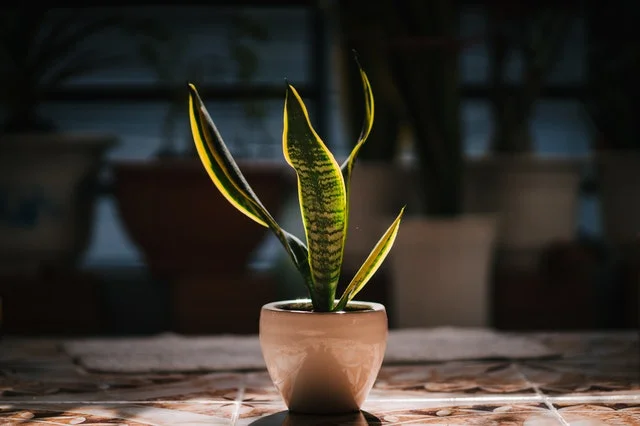A plant with drooping leaves looks sad, upsetting, and disappointing. When the leaves start to fall over, it’s time to take action.
Although, generally speaking, snake plants are one of the easiest to take care of, there will be times when things go a bit wrong, and you’ll need to find the problem and the solution.
Some of the most common causes of snake plant drooping are too much water, darkness, the wrong kind of light, a pot that’s too big or too small, or a lack of fertilization.
To stop your snake plant from drooping, you will need to sort out whichever issues are causing it. This may mean changing the environment, how you care for it, and sometimes a bit of pruning.
Table of Contents
What drooping leaves look like
The first thing we will need to discuss is what exactly drooping leaves look like. And I know it sounds like kind of an obvious question. Still, by recognizing what you need to look out for, we can better understand the probable causes and potential solutions to the problem.
When you look at a snake plant with drooping leaves, your first thought might be something along the lines of “my plant looks rather sad”. In a healthy snake plant, the leaves will be reaching up, whereas if they are starting to fall over and become floppy, that’s a sign that something isn’t quite right.
Causes of leaf drooping in snake plants
Too much water
One of the most common problems with snake plants is root rot- usually caused by too much water. Just like with humans, the majority of a plant’s cells are made up of water. Therefore, all plants will need water to survive.
However, give your snake plant too much water, and you may very well see some issues arising. All plants have a maximum amount of water they can absorb; giving them too much water will clog up the roots and prevent them from absorbing it.
This issue is common in houseplants as, unlike in the wild, they don’t share soil with other plants that can help absorb excess water.
Darkness
The reason why plants, such as the snake plant, are green can be described in one word “photosynthesis”. This is where plants take energy from the sun and turn it into energy to help with their growth.
However, when there is a lack of sun, your plant won’t be getting enough energy, and as a result, its structure will begin to be damaged. Think of it like how you might feel more tired if you skip a meal.
Keeping a plant in a closed room with closed curtains will never be suitable for it.
The wrong kind of light
Of course, it’s essential to make sure your plant is getting enough light, but as well as being enough, it also needs to be the right kind of light.
If you put your plant in a south-facing window, this will be too strong for it in the direct sunlight. As a result, your snake plant will become burnt, which can stunt its growth and cause leaf drooping.
When your plant becomes sunburnt, it may take a long time to heal itself if it’s kept in the same spot that made it sunburnt.
Pot too small
When keeping plants, it’s vital to ensure the pot is the right size for the plant. Place your plant into a pot that’s too small, and you may find it has become root-bound.
Root bound refers to when the roots have grown so large, they manage to outgrow the pots they’re in. They have already absorbed everything they can, and with nothing more to drink, they will start to droop.
Root bound plants are also more likely to catch root rot.
Pot too big
Your pot shouldn’t be too small, but you need to be careful that it doesn’t become too big either. When a pot is too big, it’s going to be surrounded by too much potting soil. This will cause your roots to sit around in wet soil, and it won’t be able to absorb all the water very quickly.
Too much soil will reduce the aeration around the roots, leading to leaf drooping issues.
Lack of Fertilizer
In the wild, plants get their nutrients when other plants die and bleed their nutrients into the ground. However, in your house, you will need to feed your plants some form of fertilizer.
When you give your plant fertilizer, the nutrients will leak into the soil and soon be absorbed by the roots. The nutrients absorbed by the plants will be used to make repairs.
With no nutrients to absorb, your plant will lack the energy it needs to remain the large and beautiful plant. As a result, it will begin to droop. You could also think of this like how you feel tired when you don’t eat.
How to solve leaf drooping in snake plants
How often to water a snake plant
We’ve already established that overwatering is one of the most common causes of root rot. But of course, you can’t just not water your plant; it will die too!
But this does raise the question, “How often should you water your snake plant?”
Many people make the mistake of watering their plants on a schedule. But they are living things, and you can’t always rely on a time table. Instead of watering them once a week or so, water them when they need watering.
To tell if they need water, check to see if the top 2 inches are dry. If they are, give them just a little bit of water.
The best kind of light
The best kind of lighting for the snake plant would be bright but indirect.
There are two ways you can do this, putting it somewhere with this kind of light or making it.
Placing it in a west or east-facing window can be the best option as this will keep it out of direct sunlight and ensure it gets plenty of vitamin D from the sun.
If the only room you can keep it in is south facing, you can try filtering the sunlight by putting other plants on your window sill or using a translucent blind.
The right kind of soil
Having the right kind of soil can also be essential for keeping your snake plant healthy and preventing its leaves from drooping.
Different plants will suit different kinds of soil. Some soil drains better than others, and different soils have different types of nutrients.
Whatever kind of soil you put your snake plant in, make sure it’s well-draining so the plant can get rid of excess water quickly.
The two most popular options for snake plant soil are cactus/succulent soil or a mixture of regular potting soil and sand. These soils are the closest to what the snake plant would experience in the wild.
The perfect pot size
We spoke earlier and the importance of getting the pot size right. Too small, and the roots will outgrow the pot. Too big, and the roots will sit in the wet soil, leading to rot.
But this begs the question, how big is big enough?
You know your plant is too big for the pot when the roots take up most of the pot. When this happens, it’s time to upsize but only go one size up. And when I say “one size”, I mean “two inches”.
So if your plant is in a 4-inch pot, when the roots outgrow the pot, it’s time to place it into a 6-inch pot.
How to fertilize
Another point we spoke about earlier was the importance of fertilizing your plant. But how do you fertilize a snake plant?
The first thing to remember is not to overdo it. Just like with water, if your plant has too many nutrients, it won’t be able to absorb them and become clogged, which can quickly lead to root rot.
You will only need to fertilize your snake plant once a month, and even then, only do it during the spring and summertime.
Pruning
And the final solution to drooping leaves is quite simply to cut them off. Make sure to do so with clean utensils.
All of the leaves in your snake plant are going to have to share resources. So, with fewer leaves, each one will have a larger share of the nutrients and sunlight. When the first leaf starts to droop, that’s a sign there isn’t enough to go around.
Cutting off that one bad leaf can save your plant as it will enable the other leaves to thrive.
Conclusion
When you own a plant, you want to look at the big, beautiful leaves. So when you walk in one day and find the leaves drooping, it can be rather upsetting. Just as we might cry when we’re sad, plants tend to droop.
But hopefully, after reading this article, you will have a better idea of what causes your leaves to drop and what you can do about it. Because when you notice drooping leaves, that’s a sign something isn’t quite right. Maybe it has too much of something or not enough of something.
As the plant parent, it will be your job to determine what’s going wrong and get it sorted.
Photo by Dương Nhân from Pexels


